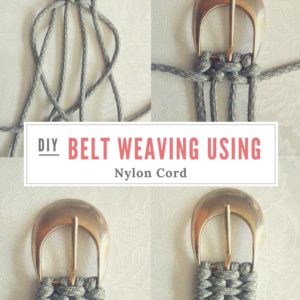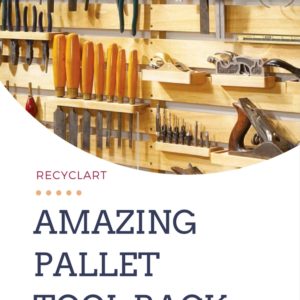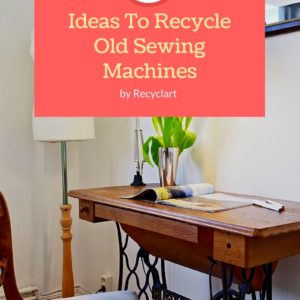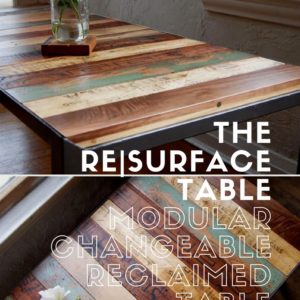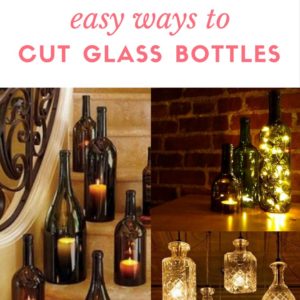
Upcycling is a major trending category for home décor product searches. Repurposed products are promoted on many DIY sites, and they can be found in retail stores, catalogs, and online sites such as Pinterest, Houzz, Instagram, Etsy, to name a few displaying countless articles and images. There is no limit to re-envisioning products and bring them to market, especially as online retail becomes more dominant as a means of marketing and sales. As a fellow maker, I frequently browse online sites for clever uses of re-made products. These are mostly home-based businesses that launch exciting new repurposed concepts. Many followers are copying these design trends as many repurposed products start out DIY. There is nothing new under the sun; however, some of these makers are on the vanguard of upcycling, repurposing, or re-use found online. They are truly original creations with a high quality of craftsmanship that meet commercial, retail production standards. They are not just one-offs or knock-offs. It is fun to see what is out there.
Railroadware, for example, has been turning industrial relics and discarded early telecommunications industry glass & steel into a full-time business since 2006 lighting fixtures, hardware, and gifts that are sold in in a few stores, national catalogs, and mostly online. We maintain a commercial standard meeting NEC standards, and UL listing is available on all light fixtures.
Glass insulators, traffic light lenses, runway globes, telegraph pole cross arm beams are a few of the raw materials Railroadware uses to make light fixtures, hardware, and gifts. They are industrial artifacts that are given a new life and a new home.
These everyday industrial objects are turned into pendant light fixtures, chandeliers, candle holders, cabinet pulls, kitchen hooks, door handles, pot and pan hangers…
Once ubiquitous and plentiful glass insulators on telegraph & telephone poles and power towers connected a vast network of steel and copper wires across our lands and connecting us to the world are now a relic of the past replaced by ceramics and high-density plastics, satellites & digital communications.
In the 1840s, both glass and porcelain insulators were used since the early days of the telegraph, but glass insulators were generally less expensive than porcelain, and were normally used for lower-voltage applications. Glass insulators were discontinued in the early 70’s. And now found in antique stores, insulator conventions, online, and lucky old barns or old or abandoned railroad lines. There is an adventure in collecting these artifacts and a skill in turning them into commercial lighting fixtures and hardware.
Tim recalls in Glenbrook, Nevada using insulators for target practice on the ground or on abandoned telephone poles. It wasn’t until he came across a common Hemingray insulator in an antique store in Oroville, CA, that the inspiration struck. He bought his first insulator for a few bucks, “I wanted to turn an insulator into a cool light fixture.” Hoping he could drill through the glass, it took a lot of testing, drilling, broken glass to make the first Insulator Light. He never thought someday they would be very popular as beautiful light fixtures hanging over kitchen islands or in restaurants, bars, and commercial spaces around the country and even overseas. While hunting for more insulators along with Butte County and other rail lines in Northern California and Oregon, he came across other railroad discards, and the product line grew. “When standing at a railroad crossing and looking both ways, many of Railroadware collectible products are part of that industrial landscape like insulators, cross-arm beams, railroad spikes, anchors & traffic light lenses.”
These days materials are mostly regionally sourced from friends & collectors at insulator and bottle shows across the country. 100-year-old glass insulators are sorted, cleaned, dipped in an acid bath, steel wooled, and prepped for drilling. The typical light includes a core drill to fit the porcelain socket, a hole for the cord, and three holes for the LED bulb’s venting. The hardware metal pieces are rusted on our “Rust Farm” until they acquire the right patina. Then they are assembled and packaged for shipping to customers.
Railroadware just celebrated their 15-year anniversary milestone of being in business. The founder, an architect, and inventor says; standing next to a grinder with a cut railroad spike in his hand wearing a leather apron, goggles, and torn-up leather gloves, “I’ve been working on the railroad all the livelong day turning rusty steel and soot coated glass into gold. I restore, assemble, reform, and craft beautiful products without having to fabricate or manufacture. These products capture the imagination of the railroad and a western-oriented audience looking for lighting & decorative products that have a connection to the past.” The wire wheel grinds years of rust and grit off the Railroad spike to become a drawer pull or wall hook. “I give these old industrial artifacts a new life. What was a piece of glass 30 feet in the air on a telegraph or telephone pole is transformed into a beautiful bar or kitchen LED light fixture called an Insulator Light.”
Railroadware, machines, and handcrafts these products in a ranch shop South of Chico, California. Most of our products are waste stream sourced materials, regionally located from collections or saved discarded materials from a landfill. The artifacts are then sorted, cleaned, and restored. The glass and steel artifacts are generally drilled, welded, cut & grinded with simple home shop tools. Some additional labor and products are outsourced or purchased as accessories. Our hardware products are rustic finished, not power coated or enameled. They use raw materials (industrial artifacts), and they spend time in the rust field for more exposure to the elements before final oiling, polishing, sealing, and shipping worldwide.
The American Remade Collection strikes a resonant chord with architects, interior designers, and business & homeowners. There is a connection to the early telegraph, telephone, telecommunications, railroad, and power industries. As emerging technologies and rapid modernization transformations our world, leaving industrial artifacts behind as discards. In some cases, these discards have become very valuable or full of potential as they can no longer be manufactured. Some companies have even made replicas that don’t have a soul or real connection to the past. We work with the real thing and celebrate the history. This requires us to rely on a supply network that is hard to replicate. Railroadware stays on track, mining the past to turn these historical objects into useful products remade again.
Tangible symbols of America’s railroad industry.
The Railroadware name and logo evolved after several visits to railroad crossings to collect insulators. I would park at railroad crossings and walk the rails with my camera and backpack to collect more insulators. There was much more to find when you look both ways.
Portions of text from San Francisco Chronicle SFGate.com 6-5-2011 Deb Wandell







